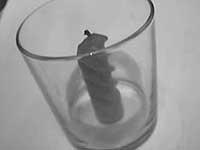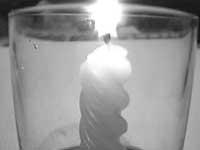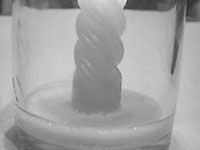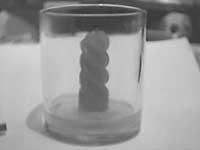Make your fire extinguisher

To paste a candle on a glass bottom with the heated wax of own candle. Let the candle wick be a little below the edge of the glass
Add three tablespoons of vinegar to the bottom of the glass and light the candle (see figure 2).
Now add a teaspoon over the baking soda vinegar. You will see bubbles forming (see figure 3).

After a few seconds, the flame will begin to weaken and turn off. If not, add another tablespoon of baking soda and mix to dissolve well in the vinegars.
Why is the fire extinguished?
Oxygen is needed to burn the wax. Adding bicarbonate to vinegar generates a gas called carbon dioxide (CO 2) that you have heard many times, because it is the gas that causes the greenhouse effect. Figure 3 bubbles appear when creating CO 2. As this gas is heavier than air, it remains at the bottom of the vessel. As the number of gases increases, the air in the vessel is expelled and finally CO 2 reaches the flame.

By needing oxygen to burn anything, the fire will go out
And why have we titled the experiment “make your fire extinguisher”?
Very easy. Many red fire extinguishers that can be seen in different places, for example, because what they have inside is the CO 2. And by throwing this content into the flames the fire goes out because it contains no oxygen.
Can you drown the extinguisher CO 2?
If you had to breathe an atmosphere totally of CO 2, you would be without oxygen and drown. But keep in mind that this gas is heavier than the air itself and will collapse from your legs. Therefore, it will be very difficult to be in an atmosphere of only CO2. There will almost always be little oxygen. Therefore, you can use the extinguishers without problems.
Summary

The reaction between vinegar (acid) and baking soda (base) produces carbon dioxide, heavier than air. The gas will fill the entire vessel and therefore expel the air and quench the fire.
Have fun with the experiment!
Buletina
Bidali zure helbide elektronikoa eta jaso asteroko buletina zure sarrera-ontzian











